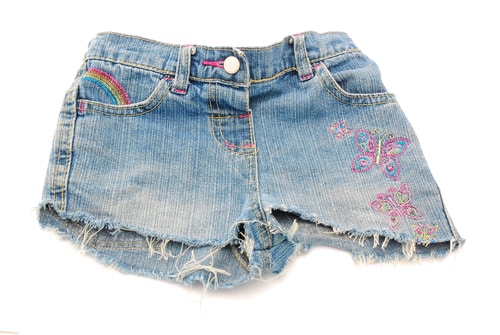I Took Out A Loan To Pay For My IVF
 After Dawn and her husband spent a substantial amount of their savings on two failed rounds of IUI, the couple began to consider adoption. The 27-year-old hopeful mother had spent a year trying to conceive naturally before embarking on fertility treatments. She had been offered no official infertility diagnosis by her doctors, but the “hard candy shell,” as she likes to call it, of her egg membrane was most likely presenting problems for husband’s sperm. Between diagnostic testing, fertility treatments, and insemination, the husband and wife were out $8,000 of their nest egg and realized that they weren’t willing to spend anymore. At least not all at once.
After Dawn and her husband spent a substantial amount of their savings on two failed rounds of IUI, the couple began to consider adoption. The 27-year-old hopeful mother had spent a year trying to conceive naturally before embarking on fertility treatments. She had been offered no official infertility diagnosis by her doctors, but the “hard candy shell,” as she likes to call it, of her egg membrane was most likely presenting problems for husband’s sperm. Between diagnostic testing, fertility treatments, and insemination, the husband and wife were out $8,000 of their nest egg and realized that they weren’t willing to spend anymore. At least not all at once.
As Dawn and her husband were weighing how exactly to expand their family, they were adamant that they would only try one round of IVF. Much like Sarah, Dawn’s fertility clinic offered a shared-risk plan in which parents were offered six rounds of IVF. If you were unable to conceive, then a majority of your money was returned to you. But if you conceived on the first go round, then “you were screwed,” Dawn says. After many lengthy discussions, she tells Mommyish that she was only willing to give her chance at parenthood one shot.
“Partially because of the money, but mostly because of the hell it puts your body through, both physically and emotionally. After looking into adoption, we intended to leave the option open to ourselves to re-evaluate if IVF failed. But after researching and speaking with some friends who were adoptive parents, we realized that our hearts were just not in that place. So we basically agreed that if IVF didn’t work the first time, we would just accept our fate as a childless couple and take our lives in a new direction.”
The couple’s fertility clinic then connected them with a lender who approved their request for a loan. Dawn describes her husband’s engineer job as “good paying,” and she herself works in healthcare. She maintains that they are “by no means rich,” but that by being several payments ahead on her student loans, the mortgage, and the family car, they were “comfortable.” The self-admitted penny-pinchers — literally, the couple saves pennies — have been admittedly financially conscious since before they were even married. Sundays were usually reserved for hashing out bills and budgeting as a team. So when it came down to determining a reasonable monthly IVF payment, the pair fired up their spreadsheet. To successfully fund their IVF adventure, the partners decided to “baby” their older car and avoid buying a new one, put off a vacation for a bit, and go out to dinner just a tad less.
The family technically started paying off the loan before Dawn even took her first fertility shot. The flush of case only covered the actual IVF procedure, which cost $12,000. Although insurance covered a very small portion of the fertility treatments, such as estrogen and progesterone supplements, the couple had to put an additional $2,000 worth of medication on their credit card. Dawn’s “you were screwed” assessment proved to be rather intuitive, as she conceived on the first round — with twins.
“Our doctor gave us the choice of transferring one embryo or two,” Dawn remembers. “Because I was under 30 and in good health with no risk factors, he said that he would not transfer more than two as to avoid an Octomom situation. He was confident that it would work, while we were not. We decided to do two, so as to give us twice the opportunity to fail. Implanting more than one doesn’t make it work better, but we justified to ourselves that if one did not implant, then we gave ourselves another chance with the other embryo. We put in two, hoping for at least one.”
Money became tighter once Dawn conceived. Her husband’s company moved his job out of state and the soon-to-be father decided on a different position, with a minor pay cut, so that his family didn’t have to move. Upon running through the calculator and spreadsheet one more time, Dawn realized that childcare for two babies in her town would have cost more than her weekly paycheck should she return to work. She then decided to be a SAHM.
Shortly before her 29th birthday, Dawn and her husband welcomed twin boys. The mother and father now make a “baby payment” in which they mail a small ticket with a check, much like they do for their car payments. In a year and half, the family has paid off one-third of their bank loan and intends to have the rest paid off by the end of 2013. Even though she recalls her initial hesitancy at using a loan for her IVF, she maintains that she would do the same all over again.
“We really didn’t want to take out a loan, but we knew it would take a very long time to save that much cash,” she shares with Mommyish. “We look at our boys and realize that we just could never put a price tag on our family. Having a family was our dream and our priority and if we had to take out the loan to get it, then it was worth it. We have two beautiful boys from IVF so if we have to put off a vacation or bigger house for another year or two, then fine by us.”
At present, the family is flirting with the idea of having one more baby. The parents have three frozen embryos that they could use at some point. But Dawn and her husband do not plan on going the IVF route again for both financial and personal reasons. While the mother loses no sleep over a single penny that she spent on her sons, she doesn’t want to take a loan again what with saving for her sons’ college education and a bigger home. In retrospect, the mother adds that the financial stress of IVF can be just was weighty as the physical stress. In keeping with the unique circumstances that define many family financial situations, she points out that it’s all personal.
“We decided that this was important enough to sacrifice other aspects of our life to achieve,” she concludes. “If we were already financially stressed prior to IVF, we may have waited a little while. It is a difficult and very personal decision that a couple needs to make. It was the best money we have ever spent.”
(photo: Lukiyanova Natalia / frenta/ Shutterstock)






